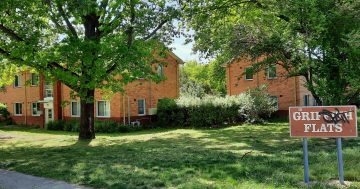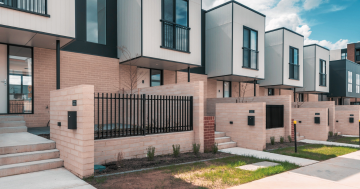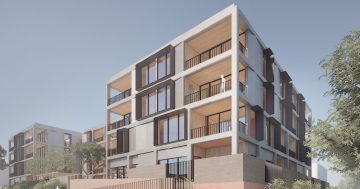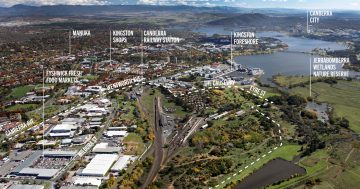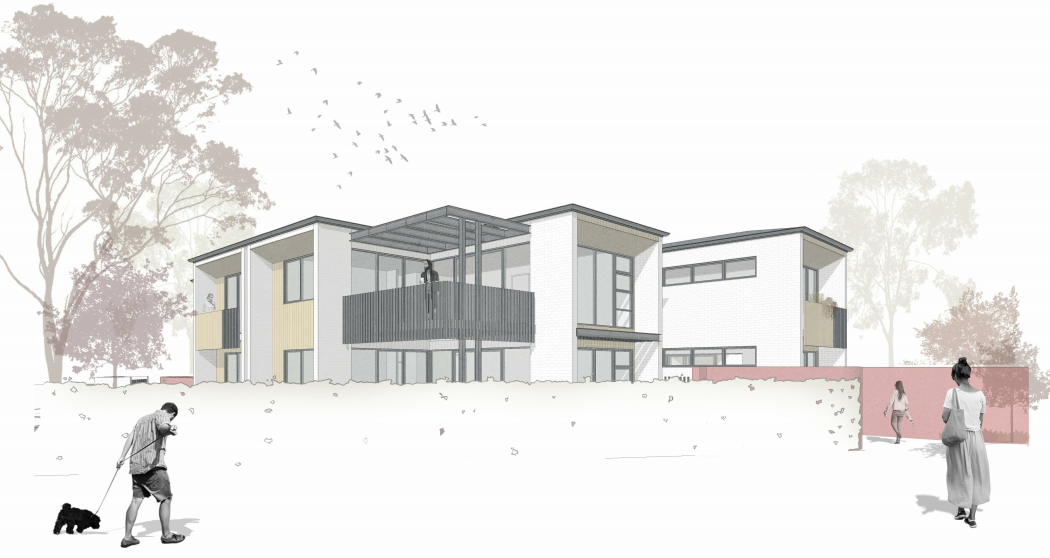
An artist’s impression of the proposed Manor House in Griffith. Image: Rob Henry Architects.
Approval of planning changes to pave the way for the construction of the controversial Manor House demonstration project in Griffith has been labelled an attack on the integrity of the planning system.
Griffith Narrabundah Community Association president David Denham said Planning and Land Management Minister Mick Gentleman’s approval of Variation 375 this week was disappointing but consistent with the ACT Government’s record of not listening to the community.
“Governments that don’t listen to the community eventually don’t do very well as we found out in the recent election,” Mr Denham said.
Mr Gentleman approved the one-off V375 despite the overwhelming number of submissions made during the consultation period being opposed to the proposal.
Out of 535 written submissions received, only four were in favour of the proposal – a two-storey, separately titled, four-unit complex with nine car parks to be built at 20 Blaxland Crescent, currently zoned RZ1 and occupied by a single residence.
The Manor House proposal is part of the government’s Demonstration Housing Project, which aims to test and showcase how a compact and active city – including residential low-rise, low-density housing – can be achieved through innovative planning, design and delivery.
The main sticking point was the RZ1 zone, which opponents argued was inappropriate for such a proposal and would be the thin edge of the wedge and usher in a new wave of higher density development across Canberra’s suburbs.
Mr Denham said NSW had had manor houses for years and there was no need to build one in RZ1 to test whether they work.
“We’ve always said that they should have been put in RZ2 and we would have been very happy with that,” he said.
The planning directorate website says it will work with proponents to deliver a handful of built homes that showcase different housing types such as co-housing and ageing in place homes to make for a more sustainable and inclusive future for Canberra.
It says the Manor House is a housing typology showcasing how infill development can be delivered within the same ‘footprint’ as a residential house.
But community groups argued that it pre-empted the current review of the Territory Plan and that the government itself did not generally support one-off or site-specific variations to the Territory Plan.
They also said that the only beneficiary would be the proponent and there is no overriding public good.
But the issue did reveal a generational divide, with some younger people supporting the idea because it would provide more housing in a desirable area.
Housing lobby group Greater Canberra, which was founded to support the proposal, welcomed the approval.
“We are thrilled that the Griffith Manor House is able to proceed,” secretary Andrew Donnellan said.
“The Demonstration Housing Project is an important effort to show how new kinds of medium-density housing can help address our housing crisis.
“The government must ensure that the results of the project are evaluated in a timely manner so we can expand ‘missing middle’ housing choices all over Canberra.”
Mr Donnellan said a recent research paper by Marko Torbarina, The Future of the Canberra Suburb, published by the Alastair Swayn Foundation, found that medium-density housing types such as the Manor House could play a role in housing Canberra’s growing population in a more affordable and sustainable way.
He said that as the government continues with its planning reforms, Greater Canberra would push for planning rules that enable the urban infill needed for a more liveable, sustainable and affordable city.
Mr Gentleman said he approved the variation because the ACT needed more ‘missing middle’ developments.
“The ACT Government’s Demonstration Housing project enables prototypes of these types of developments to be tested to see if they are suitable for broader application across Canberra,” Mr Gentleman said.
He said minor amendments were made to the draft version after community feedback, including limiting the size of the building to 50 per cent of the block in response to concerns about the scale of the development.
The next step would be the lodgment of a development application.
The Manor House is the second project in the ACT Demonstration Housing Project to obtain a Territory Plan variation after the less controversial Stellulata Cohousing project in Ainslie.












